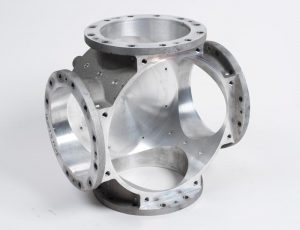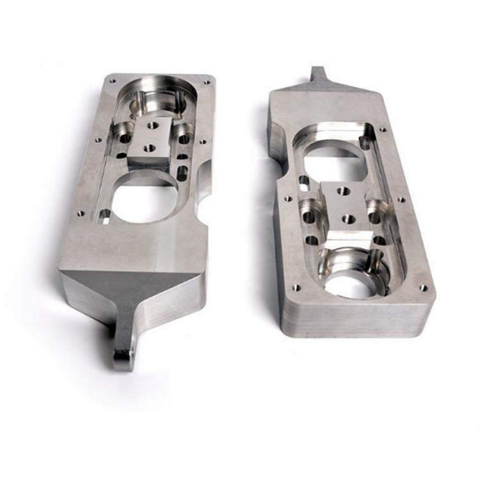Top Applications that Benefit from Aluminum Casting Company
Wiki Article
Aluminum Casting Techniques: a Deep Dive Into Products and Approaches for Success
Aluminum casting techniques play a crucial function in manufacturing. Numerous techniques exist, each fit to different applications and requirements. Sand casting is preferred for bigger components, while die casting is recognized for its precision in high-volume production. Financial investment casting offers detailed styles with remarkable finishes. Recognizing these distinctions can considerably influence task end results. Precision aluminum casting. Nonetheless, picking the ideal technique is not always straightforward, bring about essential factors to consider that have to be discovered additionallyComprehending Aluminum Casting: An Overview
Aluminum casting is a necessary production procedure employed across numerous markets to create detailed elements with high precision. This method entails pouring molten aluminum into a mold, enabling it to solidify and take the shape of the desired component. The flexibility of aluminum, integrated with its corrosion-resistant and lightweight residential or commercial properties, makes it a suitable choice for applications in auto, aerospace, and customer items.Numerous casting strategies exist, each matched to specific demands and task ranges. Aspects such as mold and mildew materials, cooling prices, and the complexity of the style play a substantial function in identifying one of the most effective strategy. Additionally, the residential properties of the aluminum alloy utilized can influence the end product's strength, surface, and sturdiness surface.
Comprehending the fundamentals of aluminum casting allows manufacturers to maximize production procedures, lower waste, and warranty premium outcome, which is necessary in today's competitive market.
Sand Casting: Techniques and Applications
Among the various techniques utilized in aluminum casting, sand casting stands apart as a result of its versatility and cost-effectiveness. This approach includes creating a mold from a blend of sand and binder, which can be formed to suit complicated layouts. As soon as the mold is ready, liquified aluminum is put right into it, enabling for elaborate features and information to be caught.Sand casting is especially beneficial for creating big parts and low-volume production runs, making it excellent for auto components, machinery components, and imaginative sculptures. The technique likewise fits a variety of aluminum alloys, enhancing its convenience in numerous applications. In addition, the use of sand as a mold and mildew product permits simple recovery and reuse, adding to ecologically sustainable practices. Achieving high dimensional accuracy can present obstacles, demanding skilled workmanship and mindful control of the casting procedure. On the whole, sand casting continues to be an essential technique in aluminum factories worldwide.
Die Casting: Precision and Effectiveness
Die casting is a highly reliable method of generating aluminum components with exceptional dimensional accuracy and surface area finish. This procedure entails compeling liquified aluminum into a precisely machined mold and mildew under high stress, which permits detailed styles and minimal product waste. The quick cooling of the alloy within the mold and mildew results in a solidified part that typically calls for little to no extra machining.Die casting is specifically beneficial for high-volume manufacturing runs, where consistency and rate are critical. It sustains the creation of complicated geometries, making it ideal for various applications, including auto, aerospace, and durable goods.
Additionally, the process can accommodate different aluminum alloys, enhancing the mechanical residential or commercial properties of the completed products. With its capability to produce lightweight yet durable parts, die casting attracts attention as a recommended method in contemporary manufacturing, supplying both precision and effectiveness in aluminum casting.
Investment Casting: Detail and Complexity
Investment casting, also known as lost-wax casting, is a versatile and exact technique for producing complicated aluminum parts. This strategy is specifically valued for its capacity to develop elaborate geometries and fine information that are frequently unattainable with various other casting techniques. The procedure begins with a wax pattern, which is covered in a ceramic shell. When the covering solidifies, the wax is thawed away, leaving a detailed mold and mildew for aluminum pouring.The advantages of investment casting consist of exceptional surface finish and dimensional accuracy, minimizing the requirement for substantial machining later. It is particularly beneficial for tiny to tool manufacturing runs where precision is essential. This approach accommodates numerous aluminum alloys, enhancing its applicability across markets. Precision aluminum casting. Eventually, financial investment casting attracts attention for its capability to deliver both visual appeal and practical efficiency in aluminum parts, making it a recommended option for designers and developers seeking complicated services

Selecting the Right Method for Your Task
Exactly how can one identify the most suitable aluminum casting approach for a certain project? The option procedure depends upon a number of vital aspects, consisting of the complexity of the style, the preferred surface coating, and production quantity needs. For intricate styles, investment casting commonly verifies helpful as a result of its ability to catch great details. On the other hand, sand casting might be preferred for larger, much less complicated parts, offering cost-efficiency and adaptability in manufacturing.Considerations pertaining to tolerances and mechanical properties of the last product Full Article are necessary. For high-performance parts, die casting might be the most effective option, as it provides superior dimensional precision and surface top quality. On top of that, comprehending the material homes and compatibility with the picked approach is very important for making sure the success of the job. Inevitably, an extensive evaluation of these factors will certainly lead the decision-making procedure, bring about one of the most reliable aluminum casting technique for the particular project available.
Frequently Asked Concerns
What Is the Environmental Effect of Aluminum Casting Methods?

Exactly How Can I Boost the Surface End Up of Cast Aluminum?
To enhance the surface finish of cast aluminum, one can utilize strategies such as sandblasting, polishing, and using finishings. Correct mold design and temperature control also significantly improve the final surface high quality of the cast product.What Safety Precautions Should Be Taken Throughout Aluminum Casting?
During aluminum casting, necessary safety and security preventative measures consist of putting on safety equipment, making sure correct ventilation, making use of fireproof products, preserving a risk-free range from molten metal, and adhering to equipment safety and security procedures to avoid accidents and injuries.Exactly how Do I Troubleshoot Usual Casting Flaws?
To fix usual casting problems, one must check the mold for a fantastic read damages, assess the alloy make-up, check putting temperature level, adjust cooling prices, and warranty proper venting to decrease air entrapment and boost casting high quality.What Are the Expenses Connected With Various Aluminum Casting Techniques?
original site
The prices connected with different aluminum casting methods vary substantially, affected by elements such as product expenses, labor, production, and tools range. Spending plan considerations are essential for choosing one of the most suitable casting method for certain tasks.
Sand casting is preferred for larger parts, while die casting is recognized for its precision in high-volume production. Amongst the various methods utilized in aluminum casting, sand casting stands out due to its versatility and cost-effectiveness. Die casting is a very effective technique of creating aluminum elements with remarkable dimensional precision and surface area finish. Investment casting, additionally recognized as lost-wax casting, is a precise and flexible technique for creating intricate aluminum parts. How can one determine the most ideal aluminum casting approach for a specific job?
Report this wiki page